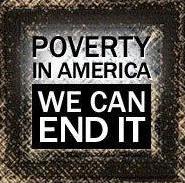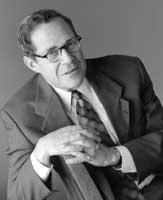With the more information, aid programs and many others support the amount of poverty in America doesn’t have to remain a severe problem.
Our Groups goal is two parts: to provide more consciousness about a problem that affects us all but many believe can’t be solved and a plan to decrease the level of poverty.
First To accomplish this, our campaign is designed to provide more people, mainly the voting population, with the methods on how to lessen this problem. By supporting local and national legislation to increase social aid programs we can give more opportunities to the poor
Online: This Site, FaceBook
Spokesperson: Peter B. Edelman Biography
Professor of Law; Co-Director, Joint Degree in Law and Public Policy; Faculty Director, Center on Poverty, Inequality, and Public Policy
A.B., LL.B., Harvard
Second a locally ran program that would increase the Education of the poorest in our society. Form our collected research this has been seen as a major factor in improving ones income yearly and helps avoid and prevent poverty for Americas.
· Improved training of Teacher’s Kindergarten through High School
· Early education program for toddlers before Kindergarten
· More funding for learning during school and inside the home
· Programs of 4 hour ea day, five times a week, for 9 months out of the year
These tactics have been shown successful in increasing the income of underprivileged youth of poor families. Increasing the amount of education available gives the poor more opportunities to succeed later in life in the job market. It also provides them with tools needed to stay out of poverty once successful. This plan calls for an estimated timeline of two decades, to affect a difference in the youth able to take part in the program (Gilbert).
We expect to see a direct increase in the amount of high school graduations and college attendance in the poorest communities. Enrollment in 4-year schools should double in rate form this program to 40% from the current 20%. The employment rate amongst the poor will increase 10% versus current amounts (80%-90%). As well as the monetary amounts in checking and savings accounts of the participants.
These numbers are possible to change, they are based on the studies: 1962-1967 Perry Preschool in Ypsilanti, Michigan and 1972-1977 Carolina Abecedarian in North Carolina (Gilbert).



